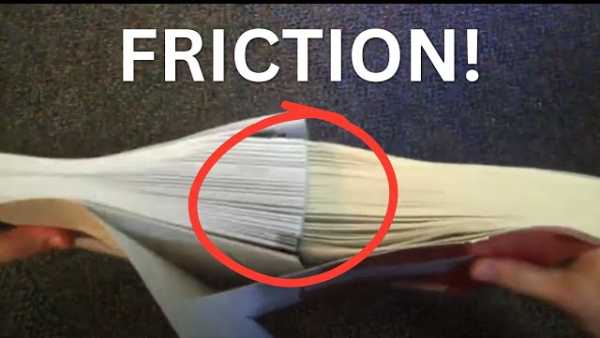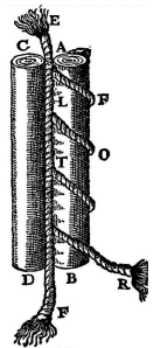Ropes
Table of Contents
Question 1: How are fibres 3 cubits long so tightly bound together in a rope 100 cubits long that great force is required to break it?
The fibres of hemp are held at the ends and are grasped by the surrounding medium throughout their entire length.
- Because of this, it is more difficult to tear them loose.
But in the case of the rope, the act of twisting causes the threads to bind one another.
- When the rope is stretched with a great force, the fibres break rather than separate from each other.

Ropes sometimes break not by a lengthwise pull but by excessive twisting.
This is because the threads bind one another so tightly.
The compressing fibres do not permit those which are compressed to lengthen the spirals even that little bit by which it is necessary for them to lengthen in order to surround the rope which, on twisting, grows shorter and thicker.
Yes, the thread held between the fingers does not yield even if it is pulled with considerable force.
It resists because it is held back by a double compression: The upper finger presses against the lower as hard as the lower against the upper.
If we could retain only one of these pressures then only half the original resistance would remain.
But since we are not able, by lifting, say, the upper finger, to remove one of these pressures without also removing the other, it becomes necessary to preserve one of them by means of a new device which causes the thread to press itself against the finger or against some other solid body upon which it rests.
Thus, the very force which pulls it in order to snatch it away compresses it more and more as the pull increases.
This is accomplished by wrapping the thread around the solid in the way of a spiral.
Let AB and CD be 2 cylinders between which is stretched the cord EF.

If these 2 cylinders are pressed strongly together, the cord EF, when drawn by the end F, will stand a considerable pull before it slips between the 2 compressing solids.
But if we remove the cord from one of these cylinders, they will slip freely though remaining in contact with the other.
On the other hand, if one holds the cord loosely against the top of the cylinder A, winds it in the spiral form AFLOTR, and then pulls it by the end R, then the cord will begin to bind the cylinder.
The more spirals, the more tightly will the cord be pressed against the cylinder by any given pull.
Thus as the number of turns increases, the line of Fig 2 (10) contact becomes longer and in consequence more resistant so that the cord slips and yields to the tractive force with increasing difficulty.
This is precisely the resistance in the thick hemp rope where the fibres form thousands of similar spirals.
The binding effect of these turns is so great.
- A few short rushes woven together into a few interlacing spirals form one of the strongest of ropes called pack rope [susta].
3 turns of a rope around the axle of a windlass can hold it and prevent it from slipping when pulled by the immense force of the weight which it sustains.
By turning the windlass, this same axle, by mere friction of the rope around it, can wind up and lift huge stones while a mere boy is able to handle the slack of the rope.